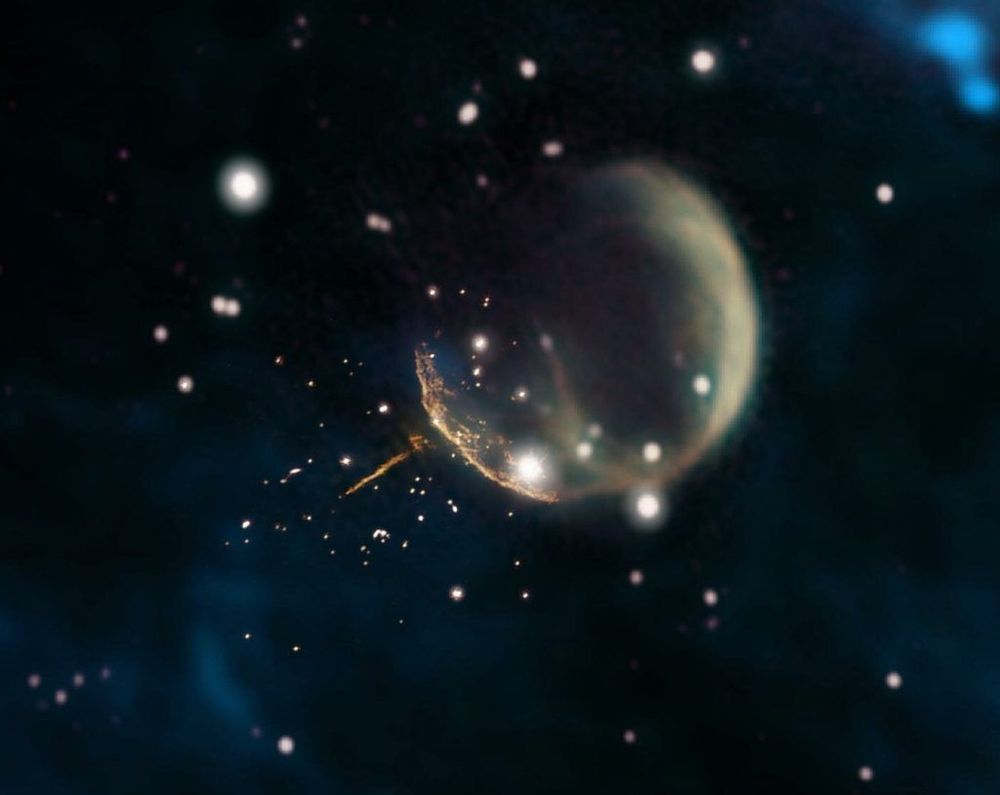Astronomers observed a ghostly pulsar, a superdense, rapidly spinning neutron star exploded from a supernova 10,000 years ago, racing through space at nearly 2.5 million miles an hour—so fast it could travel the distance between Earth and the Moon in just 6 minutes. The discovery was made using NASA’s Fermi Gamma-ray Space Telescope and the National Science Foundation’s Karl G. Jansky Very Large Array (VLA).
The pulsar lies about 53 light-years from the center of a supernova remnant called CTB 1. Its rapid motion through interstellar gas results in shock waves that produce the tail of magnetic energy and accelerated particles detected at radio wavelengths using the VLA. The tail extends 13 light-years and clearly points back to the center of CTB 1.
This one, dubbed PSR J0002+6216 (J0002 for short), sports a radio-emitting tail pointing directly toward the expanding debris of a recent supernova explosion. “Thanks to its narrow dart-like tail and a fortuitous viewing angle, we can trace this pulsar straight back to its birthplace,” said Frank Schinzel, a scientist at the National Radio Astronomy Observatory (NRAO) in Socorro, New Mexico. “Further study of this object will help us better understand how these explosions are able to ‘kick’ neutron stars to such high speed.”
